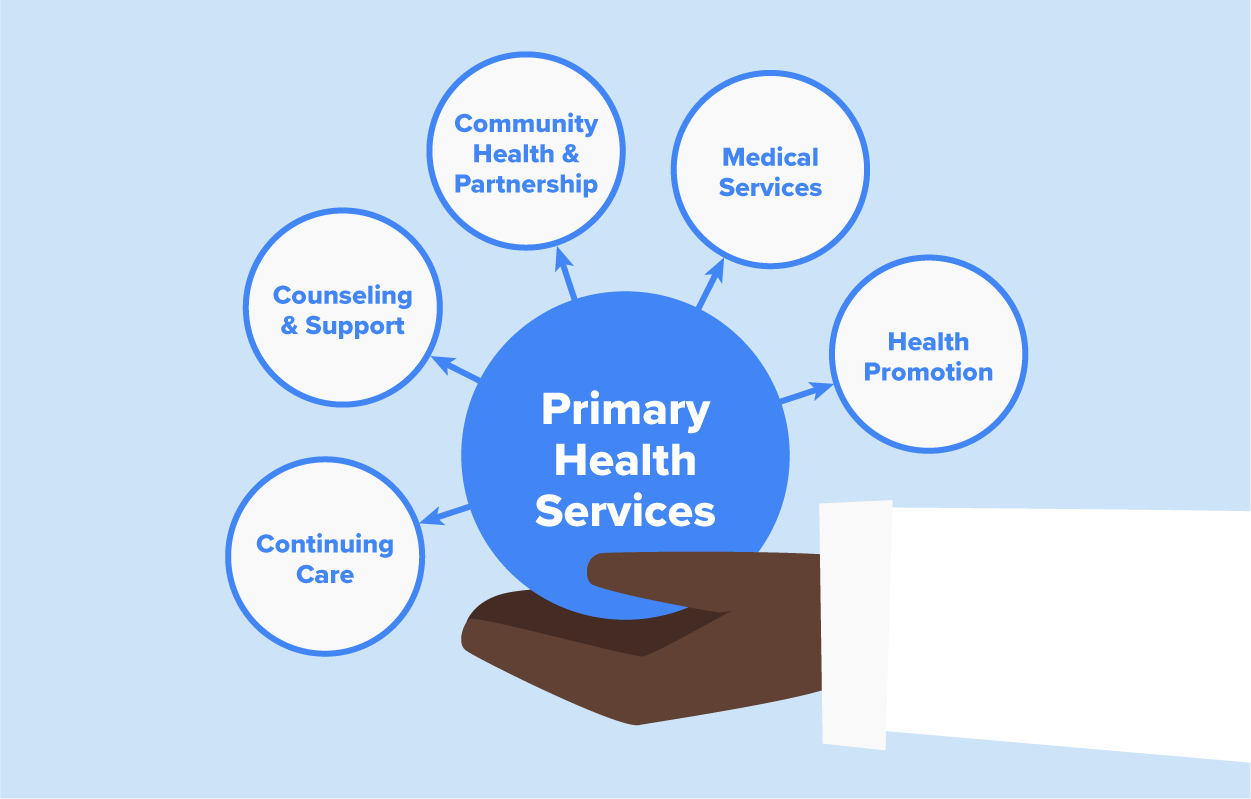Table of Contents |
Earlier in the course, you learned about various types of global health care systems, including universal health care. This lesson will provide you with a deeper understanding of the components of universal health care systems and what they can do to improve health outcomes for vulnerable populations compared to the U.S. health care system. The impact universal health care can have on public health will also be discussed.
The universal health care system, also called universal health coverage (UHC), encompasses several key components to ensure that all people have access to quality health services without financial hardship. About 2 billion people are facing financial hardship due to health care costs, including 1 billion experiencing catastrophic out-of-pocket spending (Sustainable Development Goal [SDG] target 3.8.2) and 344 million going deeper into extreme poverty. The world is off track to making progress toward UHC. Improvements to health services coverage have stagnated for years, and the proportion of the population that faced catastrophic levels of out-of-pocket health spending has continuously increased (World Health Organization, 2023). The components of a universal system include coverage of a full continuum of essential health services, including health promotion, prevention, treatment, rehabilitation, and palliative care across the entire lifespan.
Primary health care (PHC) is central to UHC. This is because PHC is the foundation for achieving UHC and ensures that essential health services are accessible to everyone, regardless of their socioeconomic status or location. It promotes equity by addressing the needs of vulnerable populations. By focusing on prevention, early intervention, and community-based care, it reduces the burden on expensive hospital-based services. Integrated health services, a part of PHC, combine various aspects of care to provide comprehensive support and address people’s health needs throughout their lives. These services enhance equity by addressing the holistic needs of a given population. These services should protect and promote measures to prevent illness and promote well-being. They should also include strategies to reduce the risk of diseases.
EXAMPLE
The integrated management of childhood illness is a program that combines preventive, curative, and promotive services for children. It focuses on early detection and management of common childhood events and illnesses, including immunization, nutrition, and growth monitoring. There are also integrated management services for pregnancy and childbirth, which ensure holistic care for pregnant women, including prenatal care, care during labor and delivery, and postpartum care. It also integrates family planning, nutrition, and maternal health.
Other components of PHC include providing timely and accurate diagnosis, followed by appropriate treatment and disease management, which supports individuals with chronic conditions in managing their health effectively.
PHC also includes a component of long-term care that ensures continuity of care for chronic and complex health needs. This includes rehabilitative care that focuses on recovery and restoration of function after an illness, injury, and surgery and long-term care, which provides ongoing assistance to individuals with chronic conditions, disabilities, or age-related needs. Activities of daily living (ADLs) when patients cannot fully care for themselves are also included. These integrated health services are part of PHC and aim to deliver comprehensive care seamlessly, considering both physical and mental health.
Multisectoral policies are actions that tackle broader determinants of health beyond the health sector. Multisectoral policies involve deliberate collaboration among various partner groups. These groups include governments, civil society, interfaith collaborations, and the private sector (such as health, environment, and economic sectors). By working together, they aim to achieve policy outcomes that improve health and well-being (Njuguna et al., 2021). They recognize that health outcomes are influenced by factors beyond the health sector, such as education, housing, transportation, and social services. Multisectoral policies emphasize accountability among partners. They ensure that budgets are well implemented, resources are allocated effectively, and partners are held responsible for achieving health-related goals.
Multisectoral policies promote holistic, collaborative approaches to health, recognizing that health outcomes are shaped by interconnected factors. They are essential for advancing UHC and building healthier societies.
EXAMPLE
Tobacco control policies play a vital role in achieving PHC through a multisectoral approach (MSA). MSAs influence tobacco-related policies. Regulations on tobacco advertising, taxation implemented by governments, and smoke-free zones (affecting public health and passed and implemented by a government) are MSAs passed to protect the public from secondhand smoke and from initiating new smokers. MSAs also support tobacco cessation services and activities as well as activities that promote other healthy behaviors like exercise.Empowerment refers to engaging individuals, families, communities, and historically marginalized groups to participate in decision-making processes about their health and well-being. Empowerment ensures that no one is left behind when receiving equitable care. It gives people a voice in designing, planning, and implementing health policies and aspects of health care, like services and interventions.
Empowering individuals includes helping them to understand and navigate the health system effectively. Understanding comes through improved health literacy. Empowerment mechanisms also promote social accountability and citizens’ rights. People become advocates for their own health and demand quality services. In short, empowerment fosters active engagement, equity, and informed decision-making, which contributes to UHC goals. The backbone of all these efforts should be a health workforce that is skilled in engagement and responsive to local context and to the needs and expectations of those using their services (Odugleh-Kolev & Parrish-Sprowl, 2018).
As mentioned earlier, UHC refers to a system where all citizens have access to essential health services without financial barriers. It ensures everyone can receive necessary medical care regardless of income or social status. Many countries achieve UHC through various models, such as single-payer systems (where the government provides the health care directly) or multipayer systems (where multiple insurers cover the population). The emphasis of UHC prioritizes equal access to care for all citizens, aiming to reduce health disparities.
The U.S. health care system is fragmented, involving multiple private insurers, employers, and government programs (like Medicare and Medicaid). This type of care often depends on financial capacity, employment status, and access to health insurance. Health care in the United States is expensive as it spends more on health care than any other country. Unlike most industrialized countries, the United States lacks UHC and underperforms relative to other countries in terms of health outcomes; access efficiency, which refers to the effectiveness and streamlined delivery of health services; and equity (Tikkanen & Abrams, 2020). High costs can lead to financial strain for patients.

While UHC aims for equitable access to care, the U.S. system faces challenges related to inequities in coverage, cost, and performance. Recall that efforts like the Affordable Care Act (ACA) have improved access, but achieving UHC remains a goal for the U.S. health care system.
Source: THIS TUTORIAL WAS AUTHORED BY SOPHIA LEARNING. PLEASE SEE OUR TERMS OF USE.
Disclaimer: The use of any CDC and United States government materials, including any links to the materials on the CDC or government websites, does not imply endorsement by the CDC or the United States government of us, our company, product, facility, service, or enterprise.
REFERENCES
Njuguna, K. D., Macharia, S., & Chagina, E. (2021). Multisectoral approach to improving health care outcomes: A systematic review. Public Health Research, 11(2), 59–73.
Odugleh-Kolev, A. & Parrish-Sprowl, J. (2018). Universal health coverage and community engagement. Bulletin of the World Health Organization, 96, 660–661. iris.who.int/bitstream/handle/10665/275074/PMC6154062.pdf
Tikkanen, R., & Abrams, M. K. (2020, January 30). U.S. health care from a global perspective, 2019: Higher spending, worse outcomes? The Commonwealth Fund. www.commonwealthfund.org/publications/issue-briefs/2020/jan/us-health-care-global-perspective-2019
World Health Organization. (2023, October 5). Universal health coverage (UHC). www.who.int/news-room/fact-sheets/detail/universal-health-coverage-%28uhc%29